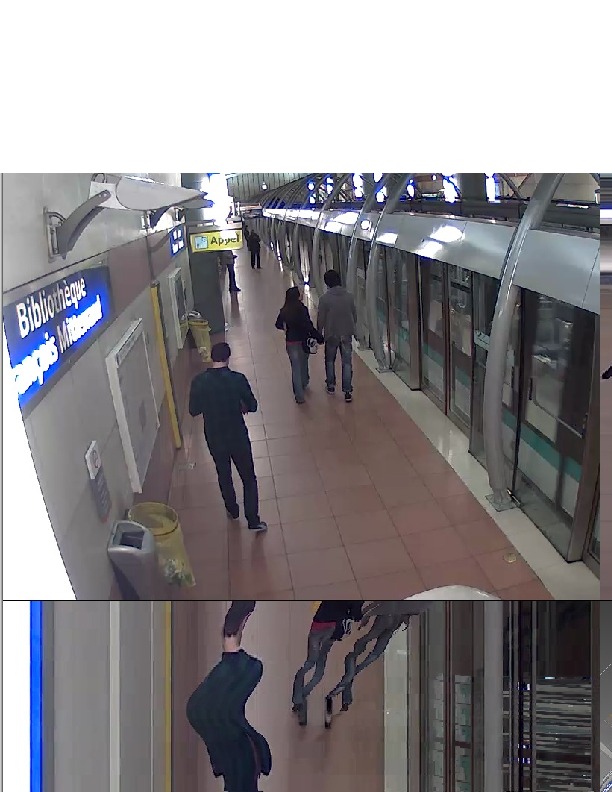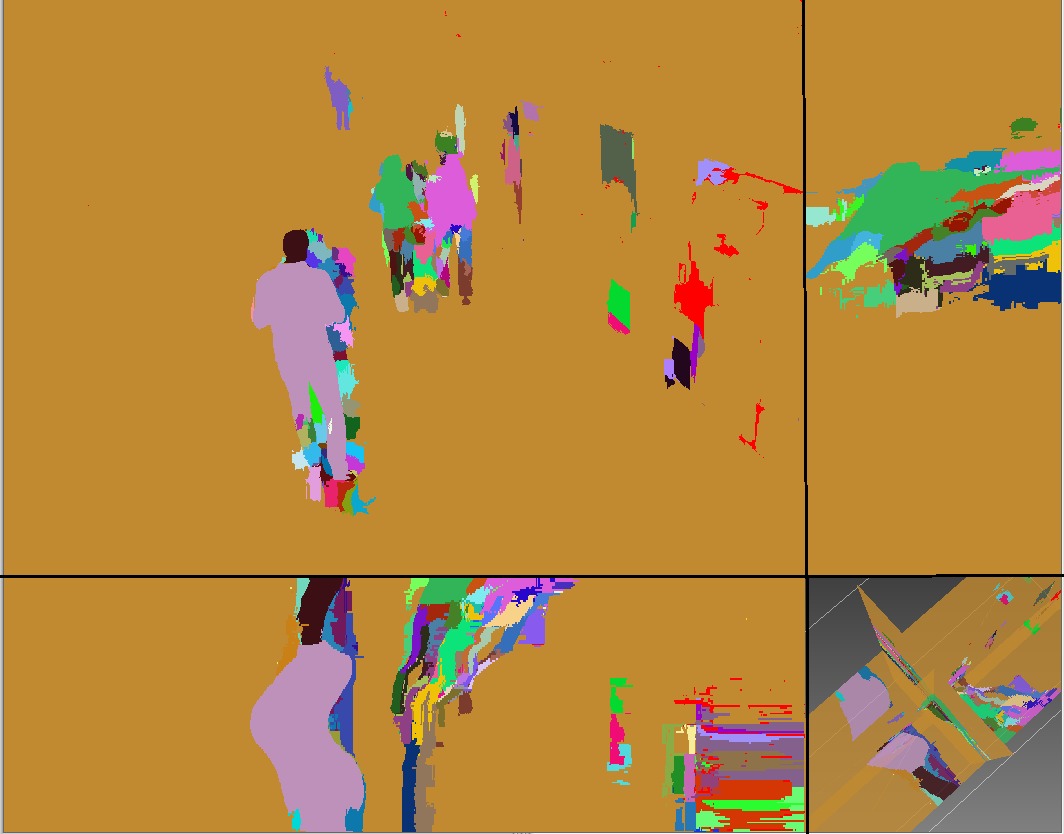Section: New Results
Fiber Based Video Segmentation
Participants : Ratnesh Kumar, Guillaume Charpiat, Monique Thonnat.
Keywords: Video Volume, Fibers, Trajectory
The aim of this work is to segment objects in videos by considering videos as 3D volumetric data (2Dtime). Figure 14 shows an input video and its corresponding partition in terms of fiber at a particular hierarchy level. Particularly, it shows 2D slices of a video volume. Bottom right corner of each figure shows the current temporal depth in the volume, while top right shows the X-time slice and bottom left shows Y-time slice. In this 3D representation of videos, points of static background form straight lines of homogeneous intensity over time, while points of moving objects form curved lines. Analogically to the fibers in MRI images of human brains, we term fibers, these straight and curved lines of homogeneous intensity. So, in our case, to segment the whole video volume data, we are interested in a dense estimation of fibers involving all pixels.
|
Initial fibers are built using correspondences computing algorithms like optical flow and descriptor matching. As these algorithms are reliable near corners and edges, we build fibers at these locations for a video. Our subsequent goal is to partition this video in terms of fibers built, by extending them (both spatially and temporally) to the rest of the video.
To extend fibers, we compute geodesics from pixels (not belonging to the initially built fibers) to fibers. For a reliable extension, the cost of moving along a geodesic is proportional to the trajectory similarity of a pixel wrt a fiber, wherein a pixel trajectory is similar to the fiber trajectory. This cost function quantifies the color homogeneity of a pixel trajectory along with its color similarity wrt a fiber. A pixel is then associated to a fiber for which this cost is minimum.
With the above mentioned steps we obtain a partition of a video in terms of fibers wherein we have a trajectory associated with each pixel. This hierarchical partition provides a mid-level representation of a video, which can be seen as a facilitator or a pre-processing step towards higher level video understanding systems eg activity recognition.




